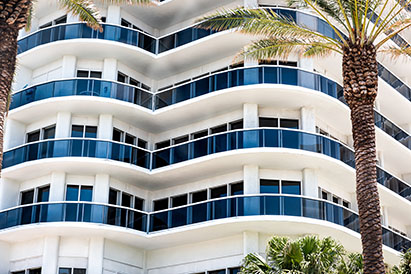Copyright © Kaloop 2025 All Right Reserved
10 Ways a CAM Can Improve Your Community’s Efficiency

Written by Chris Abbott
19 April, 2025
Table of Contents
- Streamlining Financial Management
- Enforcing Community Rules
- Managing Communication
- Coordinating Maintenance and Repairs
- Managing Resident Requests
- Overseeing Vendor Relationships
- Hosting and Managing
- Budget Planning and Long-Term Forecasting
- Ensuring Legal Compliance
- Improving Resident Engagement
- Conclusion
Managing a homeowners association (HOA) or community association is no small task. With numerous responsibilities, from financial management to keeping the residents engaged, it’s easy for things to slip through the cracks. That’s where a Community Association Manager (CAM) comes in.
A skilled CAM can significantly improve your community’s efficiency by taking on key administrative duties, offering expert advice, and implementing processes that keep everything running smoothly. Here are 10 ways a CAM can streamline your community operations:
1. Streamlining Financial Management
One of the most crucial tasks of a CAM is managing the community’s finances. From setting the annual budget to collecting dues, the CAM ensures that financial operations are seamless. They track income and expenses, generate financial reports, and work closely with board members to ensure the association’s funds are used wisely. CAMs ensure financial transparency, making it easier for board members and residents to understand where funds are allocated.
Example: A CAM uses software to automate bill collection, keeping residents on track with timely payments and reducing manual tracking for the board.
2. Enforcing Community Rules and Regulations
A CAM is responsible for ensuring that the community follows the rules and regulations outlined in the governing documents (CC&Rs). They are the ones who handle violations, track issues, and enforce policies. By keeping a well-organized system of documenting and handling infractions, the CAM ensures that enforcement is consistent, fair, and transparent.
Example: Instead of manually tracking violations, a CAM uses a task management system like Kaloop’s Task Management feature, which automatically logs violations and sends notifications to the appropriate parties.
3. Managing Communication
Clear communication is key to the smooth running of any community. A CAM serves as the primary point of contact between residents and the board, ensuring that all parties stay informed. They handle emails, phone calls, newsletters, and notifications about upcoming events, meetings, or important changes to the community.
Example: A CAM can automate email notifications for upcoming meetings, rule changes, and maintenance schedules to ensure all residents receive timely and consistent communication.
4. Coordinating Maintenance and Repairs
A CAM takes the burden of coordinating maintenance projects off the board’s shoulders. Whether it’s a routine landscape job, a plumbing issue, or managing contractors for large-scale repairs, the CAM manages the entire process. They ensure timely follow-ups, check contractor quality, and verify work completion.
Example: CAMs use management software to schedule, track, and confirm completion of maintenance requests, ensuring that nothing gets overlooked.
5. Managing Resident Requests and Concerns
When residents have questions or concerns, the CAM acts as a mediator, handling requests and resolving issues quickly. From handling maintenance complaints to addressing questions about community policies, a CAM ensures that all residents feel heard and valued.
Example: With a ticketing system in place, a CAM can easily categorize and prioritize requests, ensuring that no issues fall through the cracks and that urgent requests are handled promptly
6. Overseeing Vendor Relationships
A well-managed community needs reliable vendors, whether for landscaping, security, cleaning, or maintenance. CAMs negotiate contracts, manage relationships, and monitor vendor performance to ensure the community is receiving the best value for their money.
Example: A CAM evaluates vendor performance based on clear metrics and uses management software to track service delivery, ensuring vendors meet their agreed-upon terms.
7. Hosting and Managing Board Meetings
A CAM schedules and facilitates board meetings, ensuring that they run efficiently and remain productive. They prepare agendas, distribute meeting materials, and ensure that all action items are documented and followed up on after the meeting.
Example: Using Kaloop’s meeting management features, the CAM can send out agendas in advance, track attendance, and follow up on assigned tasks—all within one platform.
8. Budget Planning and Long-Term Forecasting
CAMs work with the board to prepare the annual budget and create long-term financial forecasts for the community’s needs. They ensure that funds are allocated appropriately and that the community is financially prepared for any unexpected expenses or large projects.
Example: A CAM utilizes financial software that provides real-time data and predictive forecasting, helping the board make informed decisions about the community’s long-term financial health.
9. Ensuring Legal Compliance
HOAs must comply with local, state, and federal laws, and a CAM helps ensure that the community adheres to these regulations. From understanding fair housing laws to ensuring compliance with zoning codes, a CAM protects the community from potential legal risks.
Example: A CAM regularly reviews legal updates and ensures that the community’s governing documents and procedures are in alignment with current laws, keeping the association legally compliant.
10. Improving Resident Engagement
A CAM’s role extends beyond managing the daily operations of the community. They actively engage with residents, organizing social events, community gatherings, and communication channels to foster a strong sense of belonging. This helps improve the overall experience of living in the community.
Example: A CAM uses online platforms to organize community events, create resident polls, and gather feedback to keep the community engaged and make them feel involved in decision-making.
In Conclusion
A Community Association Manager (CAM) plays a critical role in making a community efficient, organized, and welcoming. By handling essential duties like financial management, rule enforcement, vendor relations, and communication, a CAM ensures that the community operates smoothly and meets the needs of its residents.
If you’re looking to streamline the management of your HOA or community association, consider how a skilled CAM can help you achieve your goals. With the right tools and expertise, CAMs are an invaluable asset to any community.


